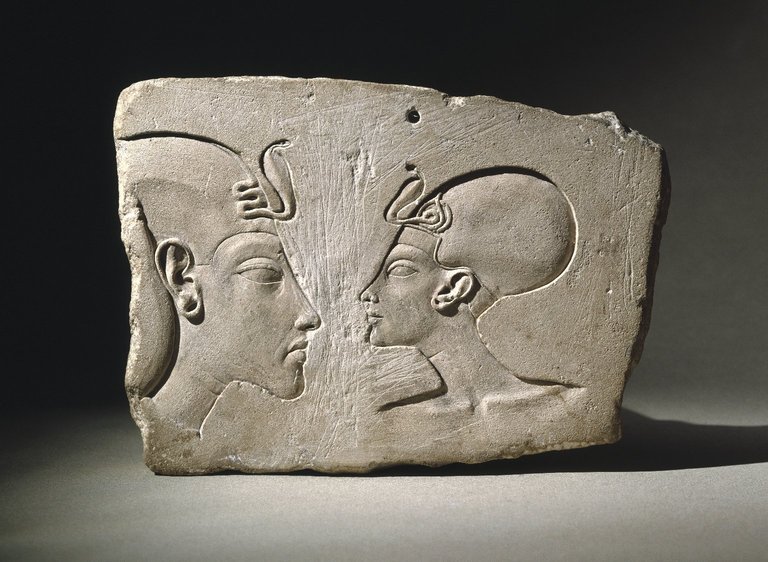The Wilbour Plaque
The Wilbour Plaque is named for the early American Egyptologist Charles Edwin Wilbour (1833–1896), who acquired it in Egypt in 1881. The small slab is not part of a larger scene but complete as it was made. It was intended as a sculptor's model, to be studied and imitated by students and beginning artists. With the hole at the top, it could be hung on a workshop wall. On the left is the head of a king, most probably a representation of Akhenaten, who wears the baglike khat headdress with a royal uraeus. Opposite him is the head of a queen wearing the ovoid cap crown often worn by Nefertiti, also with a uraeus. Both heads have ear holes for earrings. The carving is a splendid example of the elegant royal style that developed toward the end of the Amarna Period.

Source:
http://www.brooklynmuseum.org/opencollection/objects/3134/The_Wilbour_Plaque#


No comments:
Post a Comment